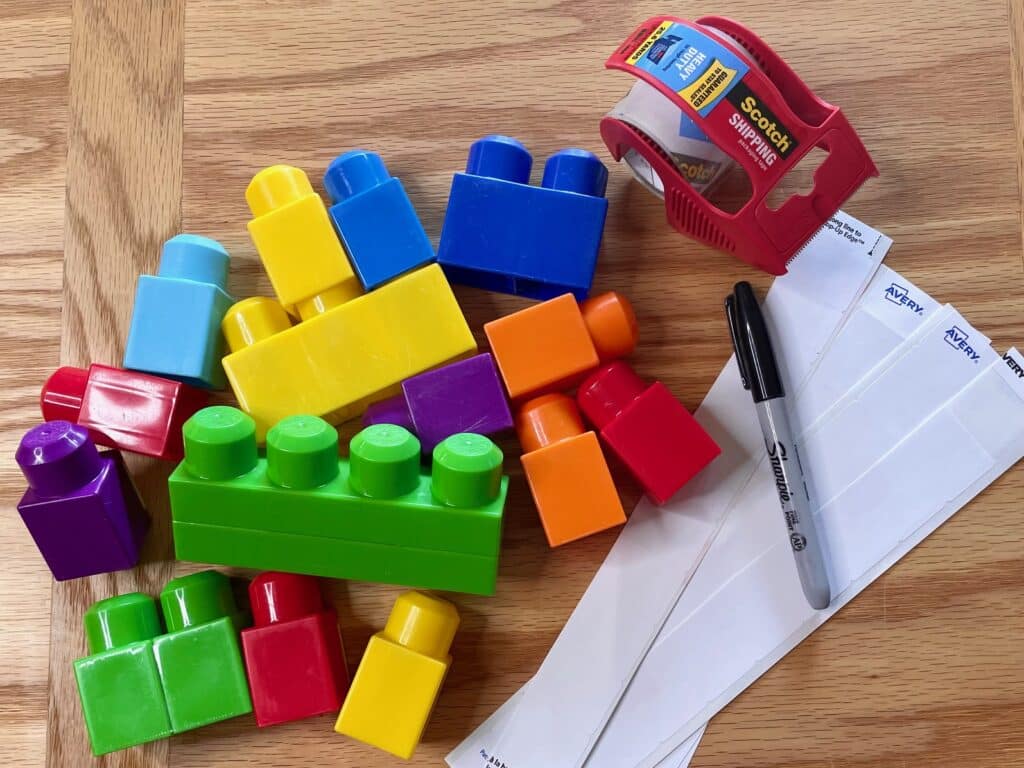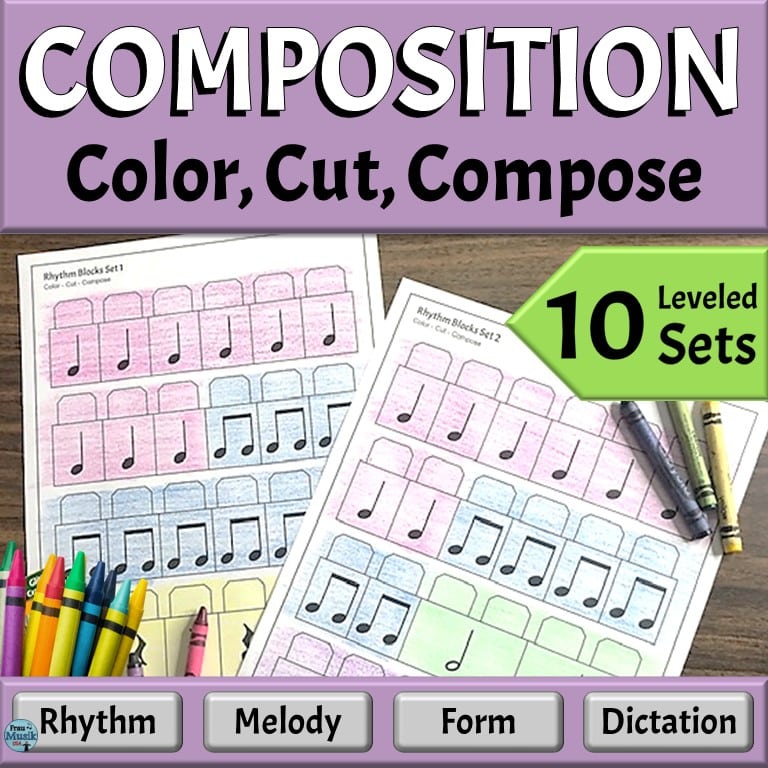How to Make Rhythm Blocks – Elementary Music Manipulatives
Using manipulatives helps elementary students develop a “concrete concept” of music reading and demystifies learning to read music. Rhythm blocks are one of our favorite manipulatives.
Some of the links on our site are affiliate links. If you click on a link and make a purchase, we may earn a small commission.
Using manipulatives is one of my favorite ways to help elementary students develop a “concrete concept” of music reading. And, rhythm blocks are one of my favorite manipulatives. Used correctly, rhythm blocks teach note values and meter in a fun and almost effortless manner.
Making rhythm blocks is easier than it may seem. Recruit a couple of helpers at home or school and you’ll have a complete set in no time.
Take a peek below for several simple tips and tricks to avoid mistakes and setbacks.

What’s in this post? Click to open the Table of Contents.
Materials Needed
You can use any brand of blocks as long as you are consistent with the sizing and the “humps”. My favorites are the large Duplo-style blocks.
- Building blocks of various lengths
- Blank address label stickers
- Black marker
- Wide, clear packing tape
- Optional: Large zippered plastic bags

Hit the garage sales and put out requests for donations of blocks. Be specific about the kind of blocks you need and how you will use them. Put your request on social media. You may be surprised how many you get.
Trade With Friends
My sets came with MANY special pieces – people, trees, car bases, etc. So, I got together with our PE Coach and we swapped blocks. His kids got a lot of special pieces and I got more plain blocks that I needed to make enough music manipulatives for use in my elementary music classroom.
Step 1: Sort Blocks by the Number of “Humps”
Create separate piles of 1-hump, 2-hump, 3-hump, and 4-hump blocks.
- 1-Hump Blocks = quarter notes, quarter rests, and eighth notes.
- 2-Hump Blocks = half notes
- 3-Humb Blocks = dotted half notes
- 4-Hump Blocks = whole notes
You can also make a few half rests and whole rest blocks. I chose only to make quarter rest blocks.

Step 2: Modify Odd-Size Blocks
If you have any odd “half-size” blocks, tightly connect them and tape them together. Tape all around the block with clear packing tape.
If you have an abundance of 1-beat blocks, tape them together tightly for 2-beat and/or 3-beat blocks.

Step 3: Label Music Notes and Rests
Use a black permanent Sharpie-type marker to draw music symbols on the address labels big enough to be seen from a distance. This will allow you to visually check students as you use your blocks for different activities.
- Cut the labels to fit each block.
- Write the music notes and rests on the address label.
Step 4: Place Music Symbol Labels on Rhythm Blocks
Place the music note or rest sticker in the middle of each block. Press firmly. Trim the label or wrap it around the edges if it is too big.
Step 5: Cover with Clear Packing Tape
Cover the music symbol sticker with clear packing tape to make them long-lasting. Wrap the edges of the tape around the side of the block and press firmly to keep the tape from peeling.
Note: My blocks are over 10 years old and have stood up to MANY elementary music students.
Advanced Rhythm Blocks
You can even create the advanced rhythm blocks below to challenge upper-level students.
- Sixteenth Notes
- Eighth/two sixteenth note pattern
- Two Sixteenth/eighth note pattern
- Syncopation
- Dotted Rhythms
- Triplets
If you don’t have enough blocks, take a peek at our Printable Color, Cut, Compose Rhythm Blocks. The printable set even includes blocks and templates in 6/8 meter.

Ways to Use Rhythm Block Music Manipulatives
The number of blocks you have will determine how you can use your rhythm blocks in your elementary music classes. I never had enough blocks for whole-class activities but our rhythm blocks were always a favorite station on center days.
Coming Soon – Keep an eye out for our next blog post – Ways to Use Rhythm Block Manipulatives.
Create an Unlimited Supply of Music Manipulatives
You can create an unlimited number of rhythm blocks with these Printable Color, Cut, Compose Rhythm Blocks. This versatile set includes 10 levels of composition blocks that provide simple activities for your early elementary grades while challenging upper elementary and middle school students.
Templates ensure student success while teaching note values and meter.
Music Manipulatives Storage
How you plan to use your rhythm block manipulatives will determine how you store them.
Store blocks as. . .
- Individual student sets in zippered plastic bags, OR
- Sort like blocks in small shoe boxes or plastic tubs (all quarter notes together, etc.), OR
- Store all rhythm blocks loose in one large box or tub
Music Manipulatives are Memorable Lessons for Students and Teachers
When you use different styles of elementary music manipulatives, these activities become memorable favorite lessons for both students and teachers. Hands-on learning helps to demystify the symbolic nature of music symbols and provide “concrete” long-lasting learning activities for your students.
Enjoy!
